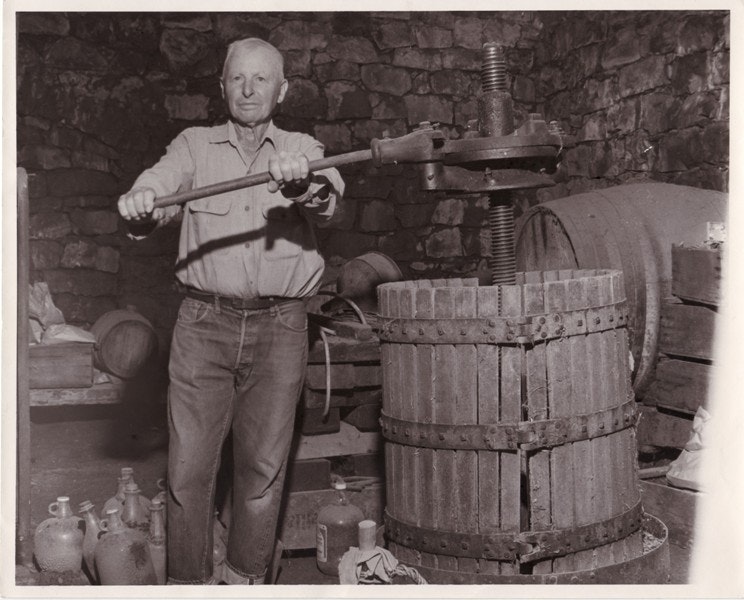Lower Italian Gardens
Julia Costello, 1998
Lower Italian Gardens, also known as the May Pole Ranch, was founded in 1857 by Italians from Northern Italy. In a pattern of emigration typical of the Southern Mother Lode, men first settled and established commercial gardens, soon sending back for wives and brides. Through chain-migration, relatives and friends from home villages followed these pioneers and used their established business as a springboard to their own financial success, working for the owners and saving money for their own investment. Mokelumne Hill had two such establishments: Upper Italian Gardens was located on East Center Street and some of its terraced gardens are now incorporated into the park system of the Mokelumne Hill Veterans District as Marredda Gardens. A Middle Italian Gardens has also been identified near the old soda works, at the intersections of Lafayette and East Center Streets, and Zumwalt Way.
Lower Italian Gardens, the May Pole Ranch, was the first home and workplace for many local Italian families: Costa, Cuneo, Cazaretto, Sanguinetti, Gallino, Trabucco, Lavezzo, and others. The gardens supplied vegetables and fruits (including oranges, apricots, lemons, almonds, cherries, peaches, and grapes) by wagon not only to Mokelumne Hill but to mines, hotels, boarding houses, and homes in the surrounding communities of Jackson, Paloma, West Point, Glencoe, and Rail Road Flat. Mokelumne Hill’s Upper and Lower Italian Gardens took advantage of the town’s unique citrus climate to compete with other Italian garden enterprises in the region.

While the name “Italian Garden” appears often around Mother Lode communities, most of these refer to private enterprises and not to the cooperative commercial ventures for which Mokelumne hill is distinguished. Here, partners owned “shares” of the entire enterprise, which were sold to other Italian families as proprietorship changed over the years. There are no similarly intact groupings of both buildings and landscape setting in either Calaveras or in neighboring Amador or Tuolumne Counties. Lower Italian Gardens is important as one of the last examples of these once important communal Italian gardening businesses.
The physical remnants of Mokelumne Hill’s Lower Italian Gardens constitute a rare and important historic district made up of buildings, structures, sites, and landscape setting. On the western side of the complex is the Cook House, built in the late 19th century as the ranch’s bunkhouse and cookhouse; remains of a stone bread-baking oven was extant in the front yard until 1999. Next door is the residence built by the Lavezzo family in 1897, complete with a stone winery in the basement of the adjacent barn. Across West Center Street is the historic Trubocco home which has an intact stone bread-baking oven sitting outside the kitchen door. This property also contains historic barns, rare examples of this once common feature. On other portions of the properties are remains of stone walls, structures, and heritage trees and plantings.
